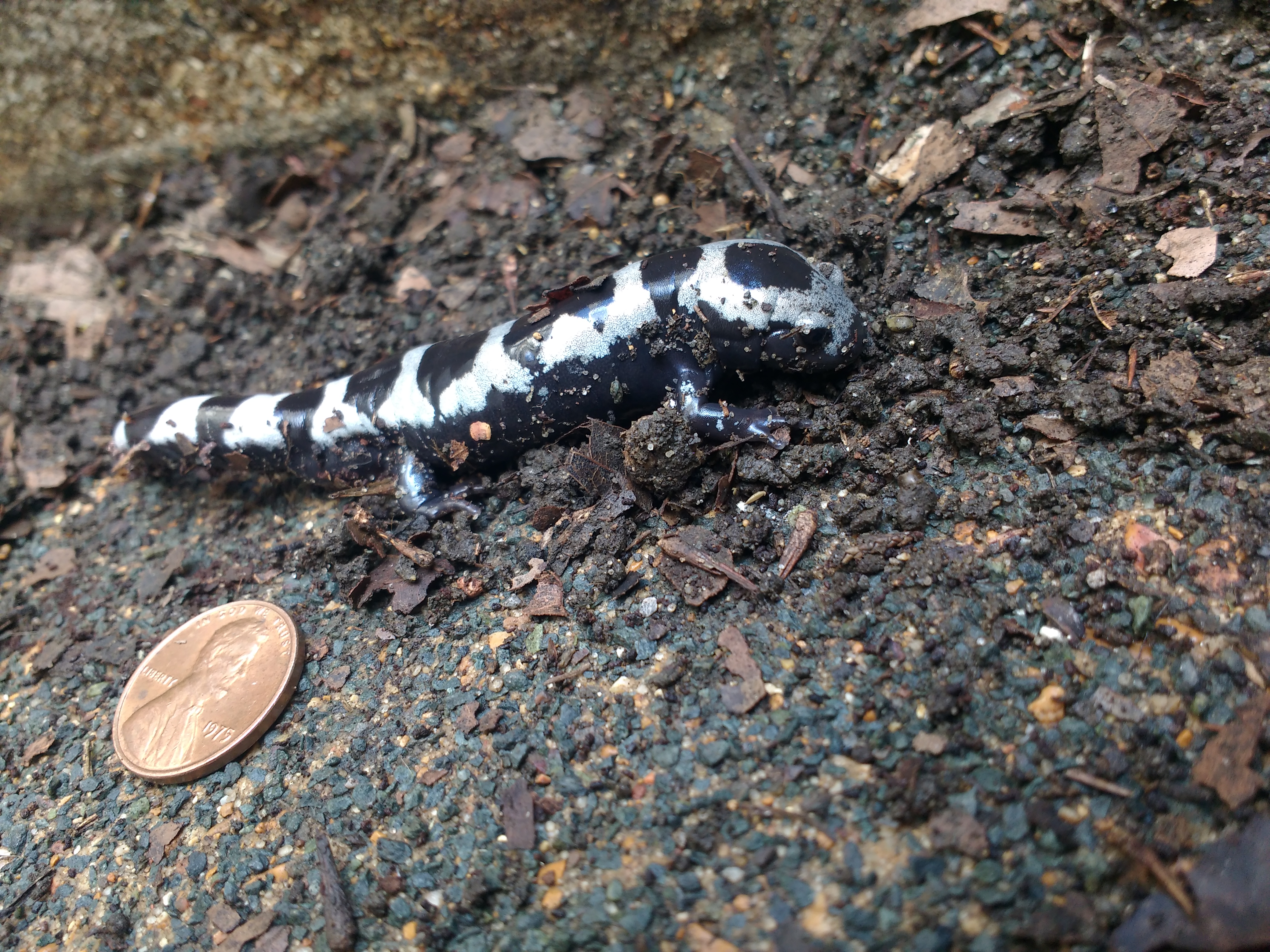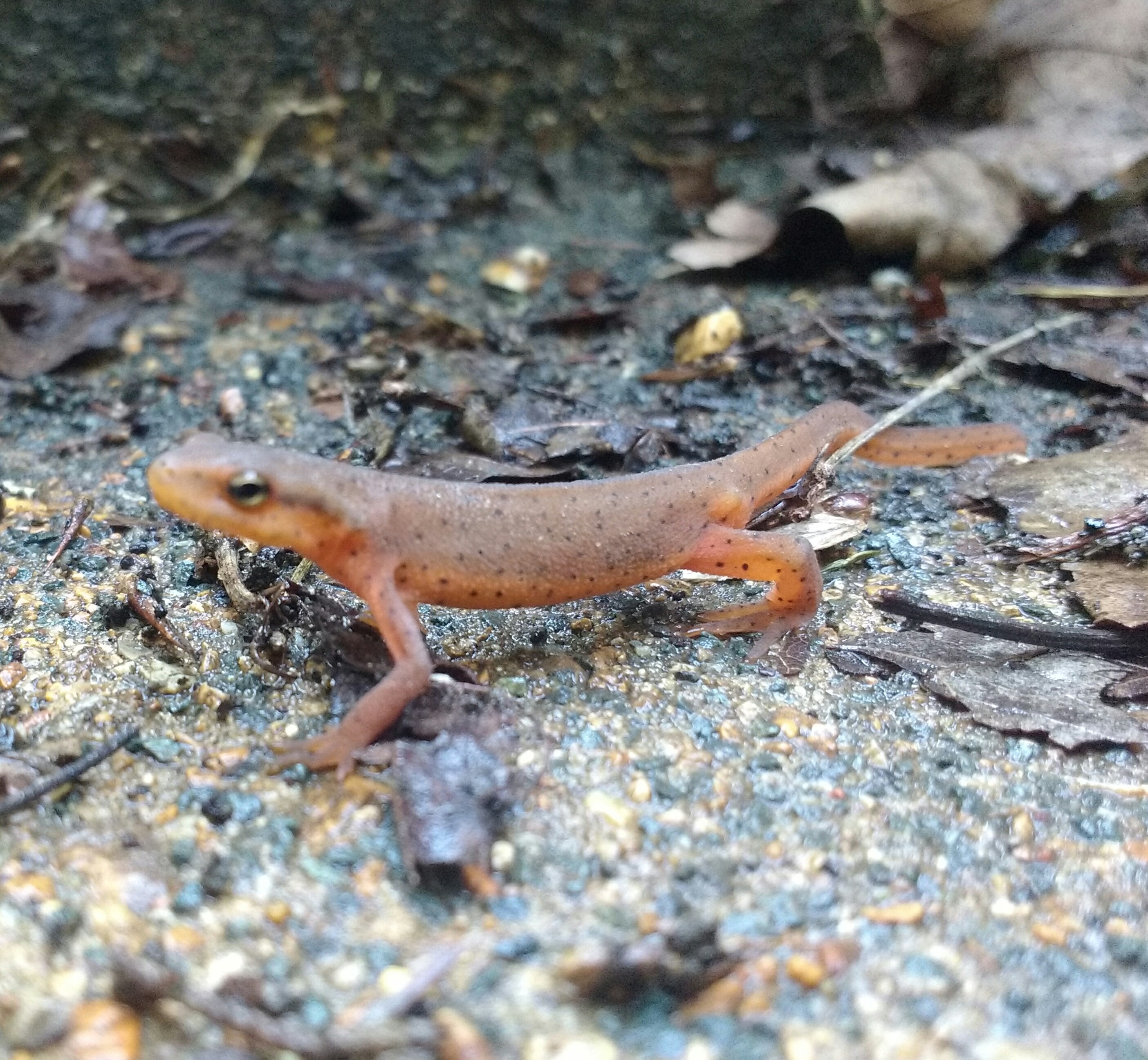at Onondaga Cave State Park
At first glance, caves may seem like empty spaces devoid of life except for maybe the occasional bat flying around. But a closer inspection reveals a diverse and oftentimes plentiful arrangement of critters that prefer the cave environment as their home. Where can you find these critters? That depends on where in the cave you look. Scientists divide cave habitats into three general zones.
The Entrance Zone
This is the area of cave that extends from the entrance. It receives sunlight, and the temperature and humidity are variable. Here, we can find green plants, nesting owls or vultures, salamanders, snails, and many other animals using the cave mouth as a shelter.
The Twilight Zone
Beyond the entrance zone is the twilight zone, where little sunlight reaches. Temperature and humidity fluctuate a small amount. Typically, no plant life is found here, but you can find cave centipedes, spiders, mushrooms, bats, frogs, crickets and cave visitors that move freely in and out of the cave. These visitors to the cave are called trogloxenes. One entertaining trogloxene in Onondaga Cave is a family of beavers that uses the cave as its winter home.
The Dark Zone
This area has total darkness, and the temperature, about 14° C (57° F) for Onondaga Cave, typically fluctuates less than one degree over the course of a year. The relative humidity is between 98% and 100%. In both the dark zone and the twilight zone, you can find troglophiles – cave-loving animals that can spend their whole lives in the cave but can also function on the surface. Slimy salamanders are a good example of these animals. In the dark zone, expect to find troglobites, which are animals that can live only in the dark and would not survive the surface world. Examples of troglobites include grotto salamanders and cave crayfish, both of which lack any pigment.
Microhabitats
These three zones are further divided into terrestrial and aquatic microhabitats. The terrestrial (land) microhabitat is quite diverse and is not easily affected by surface changes. Here, guano from bats provides the main feast for organisms, starting with decomposers such as bacteria and fungi. Beetles and mites will eat these fungi, and are in turn food for the top of the food chain – typically salamanders and frogs.
The aquatic microhabitat can be teeming with life, as the water brings in nutrients and organic matter from the surface as it drains. This provides food for all sorts of critters. One such critter is Onondaga Cave’s very own species of amphipod. Since it is found only in Onondaga Cave, it was aptly named the Onondaga Cave amphipod. Searching a cave stream, one can find salamanders, frogs, cave fish, amphipods, isopods, crayfish, snails and occasionally in Onondaga, a sunfish! Clearly, this fish took a wrong turn somewhere.
 |
|---|
 |
|---|






